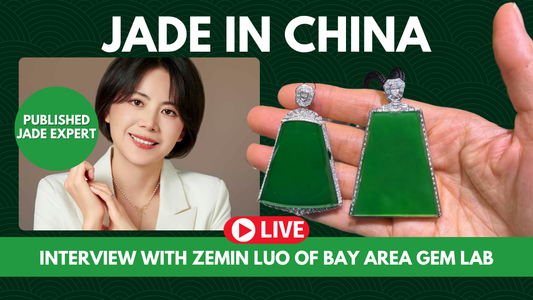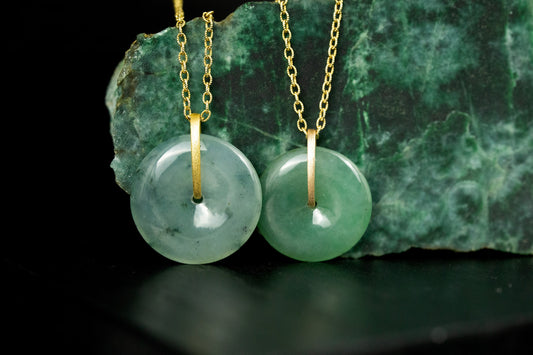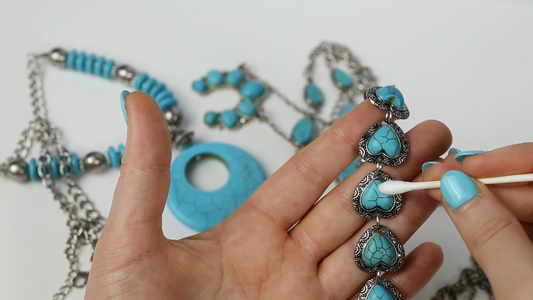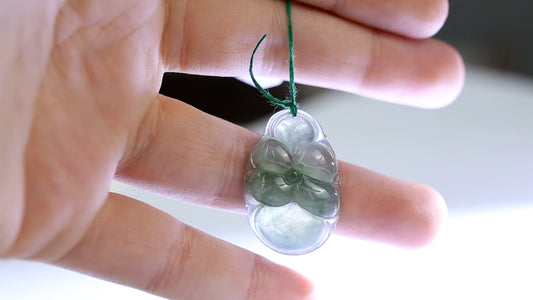Which jade is most significant in China? Why is jade so popular in China? What are the Chinese beliefs about jade?
For thousands of years, the Chinese have revered jade. In China, gold has value, but jade is priceless. Jade is believed to possess many powers and has been described as "poetry without words."
It is said that an emperor once offered 15 cities in exchange for a single jade carving, small enough to fit in the palm of his hand.
Jade has been found in ancient tombs dating back possibly as far as 8,000 years ago, and it has been a significant part of Chinese history ever since.
In this article, we will delve into the fascinating history of jade in China and explore the stories of the emperors and empresses who were obsessed with the inscrutable gem.
Jade in Ancient China
Nephrite jade was first used in China during the Neolithic period, and it was used to make a wide variety of objects, including tools, weapons, and ritual objects. However, it wasn't until the Shang Dynasty (1600 BCE - 1046 BCE) that jade became an important part of Chinese culture.
During the Shang Dynasty, jade carvings were a significant part of ritual and decor. Jade was buried with the dead, and it was believed to have powers that could protect the dead in the afterlife. Most of the Shang tombs contained knives, ornaments, and utensils made of jade.
Jade mining and hunting were prevalent in what is now Turkestan, and it supplied the Chinese people and nobility with nephrite jade, which was the most popular jade at the time. However, it is believed that China had a "Jade Age," much like the "Bronze Age" or "Iron Age," where jade was used in place of these metals.
Jade has always been an important part of Chinese culture, and it remains so today. It is still used in many different forms, from carvings and jewelry to furniture and architecture.
The Four Great Jades
Today, in the United States, we consider nephrite and jadeite jade to be "jade," gemologically speaking. But before the study of gemology, the identification of jade was more ethereal.
Long before jadeite came into the picture, nephrite jade was celebrated as a "Great Jade" along with serpentine, turquoise, and dushan jade.
Weird fact!
Dushan jade is composed of anorthite and zoisite. In Wyoming, pink zoisite (also known as thulite) is often accidentally called "pink jade," due to it's confusion with nephrite. So this mistaking of nephrite and zoisite exists in both China and the United States' jade cultures.

Qianlong's Obsession
One of the most famous stories about jade in China involves Emperor Qianlong. Qianlong believed that jade was alive and possessed miraculous powers. He believed it was the key to immortality, and he was obsessed with it.
Qianlong fell in love with a woman named Fucha, and he was enchanted by her beauty. However, her unexpected death in 1748 was devastating to the emperor. He isolated himself in his private rooms, chipping heartbroken poetry into jade stones.

As his infatuation with jade grew, he began sleeping in a jade bed, drinking from jade cups, and combing his hair with a jade brush. Qianlong's fixation became a dangerous obsession, and he defiled ancient jade bowls and carvings by carving his poetry into every jade stone he could find.
Qianlong consumed all of the jade at his disposal and longed for more. When he heard about a rare green gem that appeared to glow as if lit by a flame, he became hyper-focused on finding it. This gem was called Fei Cui, better known today as Burmese jadeite jade.
Qianlong utilized every book, map, and staff member available to him in search of the mines. When he finally thought he had found it, he mobilized tens of thousands of Imperial soldiers to search for it.
After a long campaign, the Chinese troops returned to Qianlong's palace with only two small green gemstones. This was the end of Qianlong's pursuit of Burmese jade, and he died not long after.
Dowager Empress Cixi
Dowager Empress Cixi is a significant figure in the history of jade, as the first promoter of jadeite jade in Chinese culture which ultimately brought the love of jade to the United States. She is often referred to as The Dragon Lady and is notorious for her cruelty, but as with most complex individuals, there is more to her story. Her love of jade and pearls is just one aspect of her fascinating life, and it's worth mentioning her impressive rise to power.
Before ascending to the throne, Cixi was known as Lady Yehenara, the daughter of Manchu nobility. She was chosen as an imperial concubine at the age of 16 and, according to legend, used a jade bangle as a bribe to gain entry into the emperor's harem during the virginity examination. Initially, she was just an average concubine and received little attention from Emperor Xianfeng. However, when she gave birth to a son in 1856, she rose to become second only to the empress in the harem.

When Emperor Xianfeng died in 1861, their 5-year old son Tongzhi ascended to the throne, and this is when Cixi started to gain her power. She has been called “The Godmother of Jadeite” due to her obsession with jadeite from Qianlong's reign. She adorned herself with jadeite jewelry, hairpins, carvings, and even hung a piece of jade on her mirror, which she licked every morning, believing it would calm her mind and slow the aging process. However, we do not recommend trying this at home.
Despite the poverty and decline in the outside world, Cixi lived a lavish life. She was served allegedly 120 dishes at each meal and had a team of eunuchs to care for her 20 Pekingese dogs. She eliminated anyone who threatened her power, including the regents assigned to her sons aide and possibly the Emperor's widow, her co-empress, who died under mysterious circumstances. Cixi tried to modernize China and suppress rebellion, but her actions ultimately led to the Boxer Rebellion, which resulted in the burning, defiling, and looting of the palace in Peking.

During the rebellion, countless treasures were stolen from the palace, including jade cups, jade jewelry, an imperial seal, silk, porcelain, and art. Many priceless items were destroyed, and some were auctioned off to the highest bidder. Even one of Cixi's Pekingese dogs ended up with Queen Victoria, possibly the origin of the breed's name. Burmese jadeite carvings and jewelry found their way to America, sparking an American interest in Chinese culture.
Burmese jadeite carvings and jewelry found their way to America after the destruction of the palace, along with pottery and art that sparked an American interest in the previously mysterious Chinese culture. And so the demand for jadeite in America began. Cixi returned to Peking intent on instituting change in China, but her death in 1908 left the throne in the hands of a 2-year old emperor. Tragedy soon befell China and Cixi’s reputation has been debated ever since.
Watch our *HISTORY OF JADE VIDEOS*
History of Jade (Pt. 1) China - ![]() • History of Jade i...
• History of Jade i...
History of Jade (Pt. 2) China - ![]() • History of Burmes...
• History of Burmes...
History of Jade in Guatemala - ![]() • History of Guatem...
• History of Guatem...
History of Jade in Big Sur, California- ![]() • The History and C...
• The History and C...





